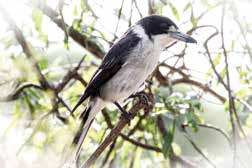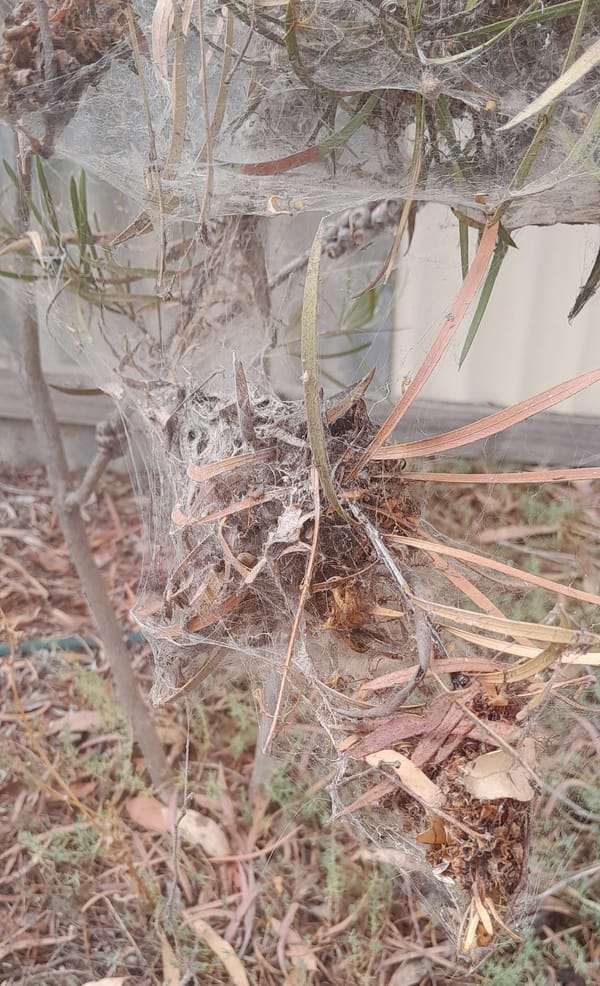Butcherbirds
One bird that rarely gets identified correctly and is usually confused with a magpie is the butcherbird.

We have two species of butcherbird here; the pied
butcherbird and the grey butcherbird. I can
forgive the misidentification for a magpie as
they are indeed very alike.
When people find an injured or orphaned
animal more people than not often don’t know
what the critter is that they’ve found. I have
been called to ‘baby kookaburras’ which turn
out to be sacred kingfishers, ‘ducklings’ that
turn out to be grebes, ‘wedge-tailed eagles’
which are falcons, just to name a few.
One of my favourites was a ‘Cape Barren
goose’ that was, in fact a guineafowl...when I
queried this one before I set out to the rescue,
I was assured that they had definitely made
the right identification as they’d ‘Googled it.’
One bird that rarely gets identified
correctly and is usually confused with
a magpie is the butcherbird. We have
two species of butcherbird here; the pied
butcherbird and the grey butcherbird. I can
forgive the misidentification for a magpie as
they are indeed very alike.
Magpies are actually in the same family
as butcherbirds and currawongs and are
essentially large butcherbirds. The call of our
butcherbirds is one of my favourite songs in
our bushland. Their melodic, bell like calls
resonate through the forest and most of us
will be familiar with the call, even if we are
unaware of the owner of such a beautiful
voice. Both male and female call to denote
territory boundaries and call more prolifically
during the breeding season.
Butcherbirds got their name by the
macabre habit of placing prey items such
as small birds and lizards on a twig or on a
protruding branch, skewering it and using
this method to pick the flesh off. I have not
ever witnessed this behaviour in butcherbirds
in our area, whether this is bad luck or good
luck, I’m not so sure! An adequate fork in a
tree will also suffice to wedge prey items into.
For this reason, these birds can be disliked as
some may perceive this as a cruel, barbaric
practice.
In reality, our Australian magpies are just
as guilty for being as cruel with their prey
items when they catch something larger like
a rodent or small bird, yet don’t seem to be
painted with quite the same brush in the eyes
of the public.
Grey butcherbirds prefer more dense
forest while the pied butcherbird likes their
landscape a little bit more open and just like
their magpie cousins, find open farmland
and remnant vegetation acceptable hunting
grounds.
The butcherbird chooses a perch, watch
and wait method to hunt their prey, very
different to the constant leg work our
magpies carry out on the ground in search of
food. They also catch insects and even small
birds in the air on the wing.
Our butcherbirds are also usually found
alone or in pairs. Unless it is fledgling time
and young birds are still with them, you
do not usually see flocks of butcherbirds,
although the pied butcherbird young can
hang out with their parents for several years,
helping with the raising of young. They are
insect eaters and of course, also carnivores
and are not averse to consuming fruits and
seeds. You often hear a butcherbird before
you see it.
Next time you hear a melodic, bell like
call which to my ears is a little more cleaner
than a magpie call, resonates more and can
almost be beautifully haunting, search for a
butcherbird.










